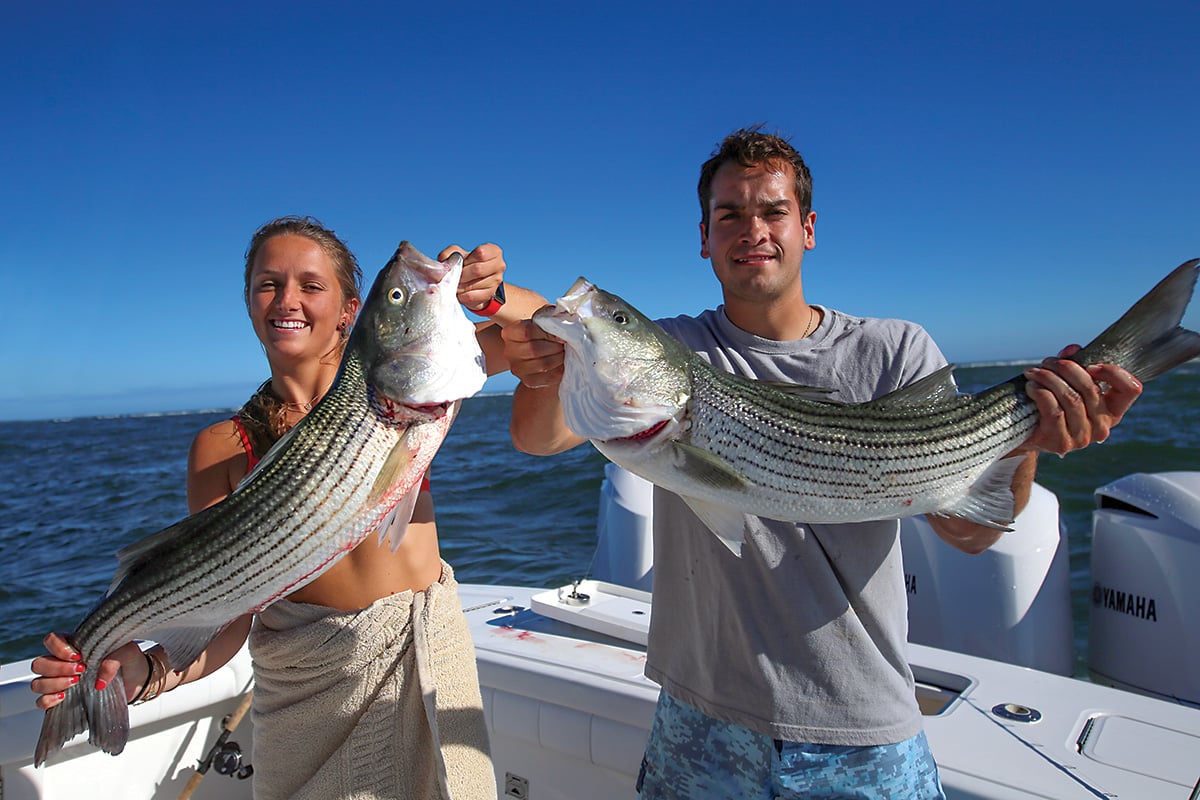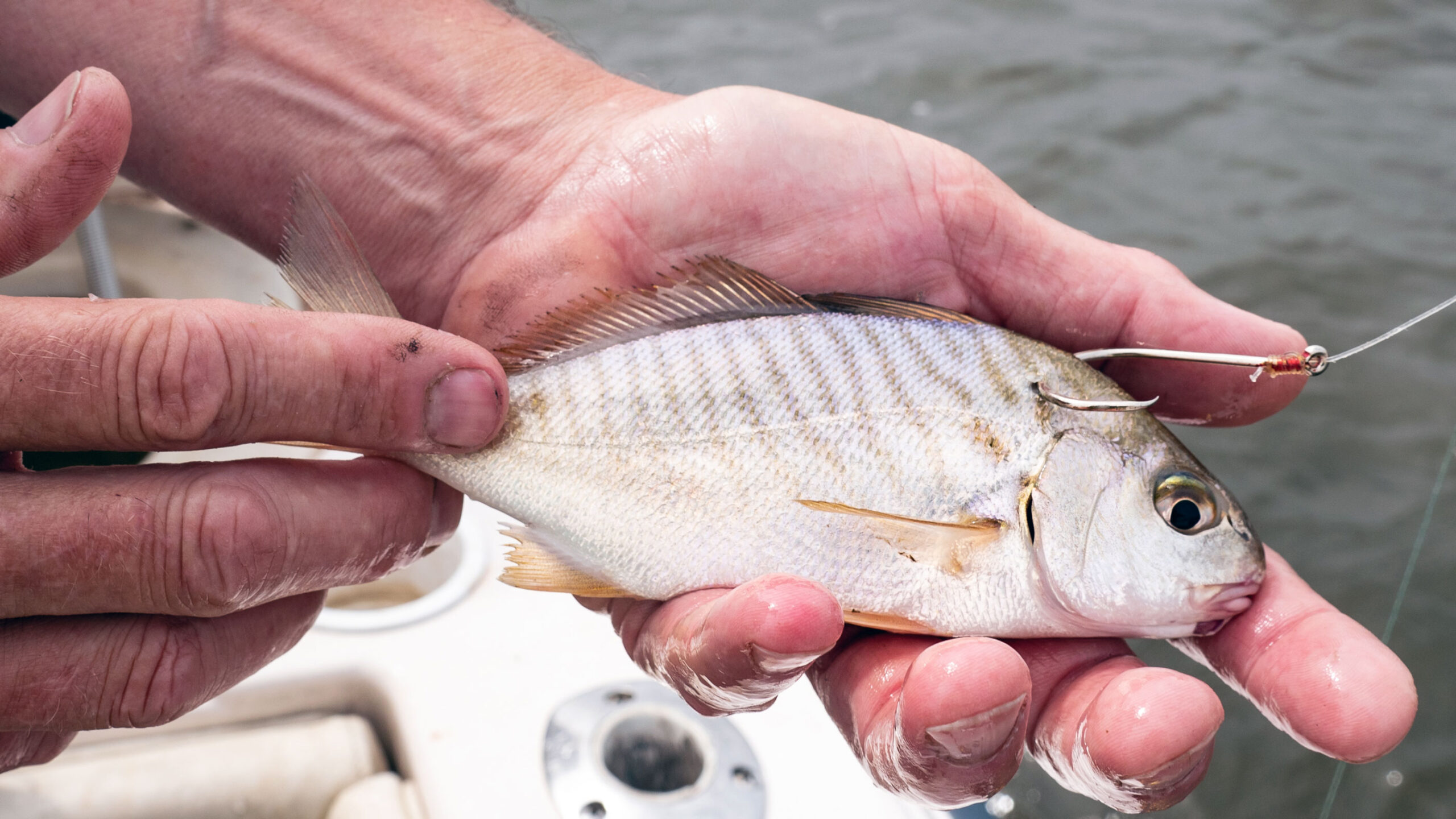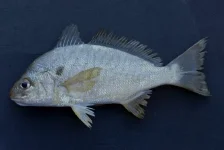The Northern Invasion: How Spot Fish Are Rewriting New York's Marine Story

In the waters surrounding New York, a quiet revolution is taking place beneath the surface. Anglers pulling in their lines from Long Island Sound, the Hudson River Estuary, and coastal waters are increasingly finding an unexpected visitor in their nets: the Spot fish (Leiostomus xanthurus), also known affectionately as "Lafayette" by old-timers. This small but significant member of the drum family is making headlines not just for its excellent qualities as both bait and table fare, but for what its presence tells us about our rapidly changing marine environment.
The Newcomer with a Distinctive Mark
The Spot gets its name from the characteristic dark blotch near the base of its pectoral fin—a marking so distinctive that even novice anglers can identify it at a glance. This silvery, laterally compressed fish, typically measuring 6-10 inches when mature, belongs to the Sciaenidae family, the same group that includes red drum, black drum, and croakers. What makes the Spot particularly noteworthy in New York waters is that until recently, encounters with this species were rare enough to be considered noteworthy by marine biologists.
The fish's scientific name, Leiostomus xanthurus, translates roughly to "smooth mouth with yellow tail," describing its soft, fleshy lips and the golden hue often visible on its caudal fin. These physical characteristics, combined with their hardy nature and impressive swimming ability, have made them both an effective predator of small crustaceans and worms and an irresistible target for larger gamefish.
A Climate-Driven Migration Story
To understand why Spot fish are appearing in New York waters with increasing frequency, we need to examine their traditional range and the environmental forces driving their northward expansion. Historically, Spot were primarily found from the Chesapeake Bay southward to Florida, with their center of abundance in the mid-Atlantic region, particularly around North Carolina and Virginia.The species follows a complex life cycle that begins with offshore spawning in the continental shelf waters during fall and winter months. Adult Spot congregate in deeper waters from October through March, where females release millions of eggs that drift with the currents. The larvae eventually find their way into estuarine nursery areas, where they develop into juveniles before returning to coastal waters as adults.

Recent research, including studies by NOAA and the Hudson River Research Reserve, indicates that rising water temperatures in the Northeast Atlantic are creating favorable conditions for species like Spot to expand their range northward. The Hudson River Estuary, in particular, has experienced significant warming over the past two decades, with summer temperatures now regularly reaching levels that support southern species throughout their critical growth periods.
According to Dr. Tom Lake, a consulting naturalist who compiles the Hudson River Almanac, "This has been a summer of exciting catches of fish, summer exotics, when the influence of the Gulf Stream is on display with uncommon marine species to rare tropical fishes reported from Haverstraw Bay, the Tappan Zee, through New York Harbor, to the East River." The appearance of Spot fish is part of this broader pattern of marine species redistribution.
The New York Invasion: Timeline and Evidence
The first documented catches of Spot in New York waters date back several decades, but they were sporadic and considered anomalies. However, recent years have seen a dramatic increase in both the frequency and size of Spot populations in the region. The Hudson River Research Reserve has documented multiple catches of juvenile Spot, some representing the first recorded instances of the species in specific areas of the estuary.In 2024, researchers caught what they described as "possibly a young-of-year" Spot in the Hudson River Estuary, suggesting that the species may now be successfully reproducing in New York waters rather than simply straying north as occasional visitors. This represents a significant ecological shift, as successful reproduction indicates that environmental conditions—water temperature, salinity, food availability, and habitat quality—now support the complete life cycle of the species.
Long Island's south shore has become a particular hotspot for Spot encounters. Tackle shops from Montauk to Babylon now regularly stock live Spot for anglers, a service that would have been unheard of just a decade ago. Captain Tom Cornicelli of Back Bay Outfitters in Center Moriches notes that several of his customers have reported catching their largest fluke and sea bass on live Spot, highlighting the species' effectiveness as bait.
Masters of Adaptation
What makes Spot fish particularly successful colonizers is their remarkable adaptability to varying environmental conditions. Unlike some marine species that require very specific habitat parameters, Spot can tolerate a wide range of salinity levels, from full-strength seawater to the brackish conditions found in estuarine environments like Long Island Sound and the Hudson River.Their feeding habits also contribute to their success. Spot are opportunistic bottom feeders, consuming a diverse diet that includes polychaete worms, small crustaceans, mollusks, and detritus. This dietary flexibility allows them to thrive in the nutrient-rich waters around New York, where human activity has created abundant food sources.
The species is also remarkably hardy when it comes to handling and transport, making them excellent live bait. Anglers report that Spot can survive in simple aerated containers for hours, remaining active and attractive to predator fish even after extended transport from bait shops to fishing grounds.
The Bait Fish Revolution

The arrival of Spot in New York waters has coincided with their growing reputation as premium live bait. Local tackle shops have responded to demand by establishing networks of suppliers, and live Spot dealers have "sprung up all over the island to meet the growing demand for these durable live baits," according to regional fishing publications.
What makes Spot particularly attractive as bait is their natural swimming behavior and hardiness. When hooked through the nose or lips, they swim with a natural, erratic motion that triggers predatory responses from a wide variety of gamefish. Captain Scott Leonard of Top Gun Sportfishing Charters reported landing a 51.9-pound striped bass on a live Spot, dispelling the myth that these baits only attract smaller fish.
The species' effectiveness extends beyond striped bass. Anglers have reported success using Spot for:
- Summer flounder (fluke), with some anglers catching personal-best fish
- Black sea bass of impressive size
- Bluefish and weakfish
- Even offshore species like tuna when used on the continental shelf
A Culinary Discovery

While Spot fish have gained recognition as exceptional bait, they're also earning respect as table fare among adventurous New York anglers. In their traditional southern range, Spot have long been considered excellent eating, often prepared simply by pan-frying whole fish or filleting larger specimens.
The flesh of Spot is described as mild and slightly sweet, with a texture similar to other drum family members. The fish have a moderate oil content that keeps the meat moist during cooking while avoiding the strong, oily taste that can characterize some marine fish. Their size makes them perfect for individual servings when cooked whole, or they can be filleted to produce boneless portions.
Southern cooking traditions offer numerous preparation methods that New York anglers are beginning to adopt:
- Pan-fried whole: Cleaned and scaled fish dredged in seasoned cornmeal and fried until golden
- Filleted and breaded: Skinless fillets coated in breadcrumbs or tempura batter
- Fish cakes: Cooked meat mixed with seasonings and formed into patties
- Fish dip: Flaked cooked meat combined with cream cheese and seasonings
Environmental Implications and Ecosystem Changes
The establishment of Spot populations in New York waters represents more than just a new fishing opportunity—it signals significant changes in the marine ecosystem. As a forage species, Spot occupy a crucial position in the food web, serving as prey for larger predators while also competing with native species for resources.Research suggests that the northward expansion of Spot and other southern species is part of a broader reorganization of marine communities in response to climate change. Water temperatures in the New York Bight have increased significantly over the past several decades, creating conditions that favor warm-water species while potentially stressing cold-water natives.
The success of Spot in New York waters may also indicate changes in food availability and habitat quality. The species' preference for estuarine environments during their juvenile stages means that their establishment could affect the dynamics of important nursery areas for native species like winter flounder, striped bass, and blue crabs.
The Future of Spot in New York Waters

Looking ahead, the trajectory of Spot populations in New York waters will likely depend on several factors, including continued warming trends, habitat availability, and interactions with established species. Climate models suggest that ocean temperatures in the Northeast will continue to rise, potentially creating even more favorable conditions for southern species expansions.
However, the long-term success of Spot in New York will also depend on their ability to complete their full life cycle in northern waters. While juvenile Spot have been documented in the region, evidence of successful adult spawning and recruitment remains limited. The species' dependence on specific temperature and salinity conditions for reproduction means that particularly cold winters could still limit their establishment.
Marine biologists are closely monitoring these developments, as the success or failure of species like Spot will provide valuable insights into how marine ecosystems respond to environmental change. The data being collected will help inform management decisions and conservation strategies for both native and newcomer species.
Fishing Regulations and Sustainability
As Spot populations become more established in New York waters, questions about regulation and sustainable harvest will become increasingly important. Currently, there are no specific size or bag limits for Spot in New York, as the species was not historically present in significant numbers.However, experiences from southern states where Spot are well-established suggest that regulations may become necessary as populations grow and fishing pressure increases. In Virginia and North Carolina, Spot are managed through seasonal closures and size limits designed to protect spawning adults and ensure sustainable harvest.
New York anglers interested in targeting Spot should follow general principles of sustainable fishing, including:
- Keeping only what can be used for bait or food
- Handling fish carefully to maximize survival if released
- Reporting unusual catches to local marine biologists
- Following all existing regulations for waters where they fish
Economic Impact on Local Fishing Industry
The arrival of Spot has created new economic opportunities for New York's fishing industry. Bait dealers have developed supply chains to provide live Spot to local anglers, while charter captains have incorporated the species into their fishing strategies. Some tackle shops report that live Spot have become among their most requested bait offerings during peak fishing seasons.The economic impact extends beyond direct sales. The effectiveness of Spot as bait has improved catch rates for important recreational species like striped bass and fluke, potentially increasing customer satisfaction and repeat business for charter operations. This indirect economic benefit could prove more significant than the direct value of the Spot themselves.
Research and Monitoring Efforts
Scientists throughout the region are actively monitoring the expansion of Spot and other southern species into New York waters. The Hudson River Research Reserve, Lamont-Doherty Earth Observatory, and various university research programs are collecting data on population dynamics, habitat use, and ecological interactions.This research is crucial for understanding how marine ecosystems respond to environmental change and for predicting future shifts in species composition. The data collected will also inform management decisions and help identify potential conflicts between native and introduced species.
Citizen science programs encourage anglers and recreational users to report unusual catches, providing valuable data points for researchers. These reports have been instrumental in documenting the expansion of Spot and other species into new areas.
Conclusion: Embracing Change in Our Waters
The story of Spot fish in New York waters is ultimately a story about adaptation—both environmental and human. As climate change continues to reshape marine ecosystems, species like Spot will likely become increasingly common in northern waters. For New York anglers, this presents both opportunities and challenges.The key to successfully managing these changes lies in monitoring, research, and adaptive management strategies that can respond to new conditions while protecting the health of marine ecosystems. As we continue to document and understand these shifts, the presence of Spot fish serves as a tangible reminder of our changing world and the resilience of marine life in the face of environmental pressures.
For the fishing community, Spot represent a new tool in the angler's arsenal and a new species to appreciate both as quarry and cuisine. As these fish continue to establish themselves in New York waters, they're not just changing what we catch—they're changing how we think about our local marine environment and our place within it.
The northern invasion of Spot fish is more than just a biological curiosity; it's a preview of the marine ecosystem of the future, where the boundaries between northern and southern species become increasingly blurred. As we adapt to these changes, we have the opportunity to gain new appreciation for the dynamic nature of our marine resources and the importance of protecting the habitats that support both native and newcomer species alike.
Whether you encounter Spot as bait, target them as table fare, or simply observe them as indicators of environmental change, these small fish carry big implications for the future of fishing in New York waters. Their story is still being written, and every angler who wets a line has the opportunity to contribute to our understanding of this fascinating ecological transformation

